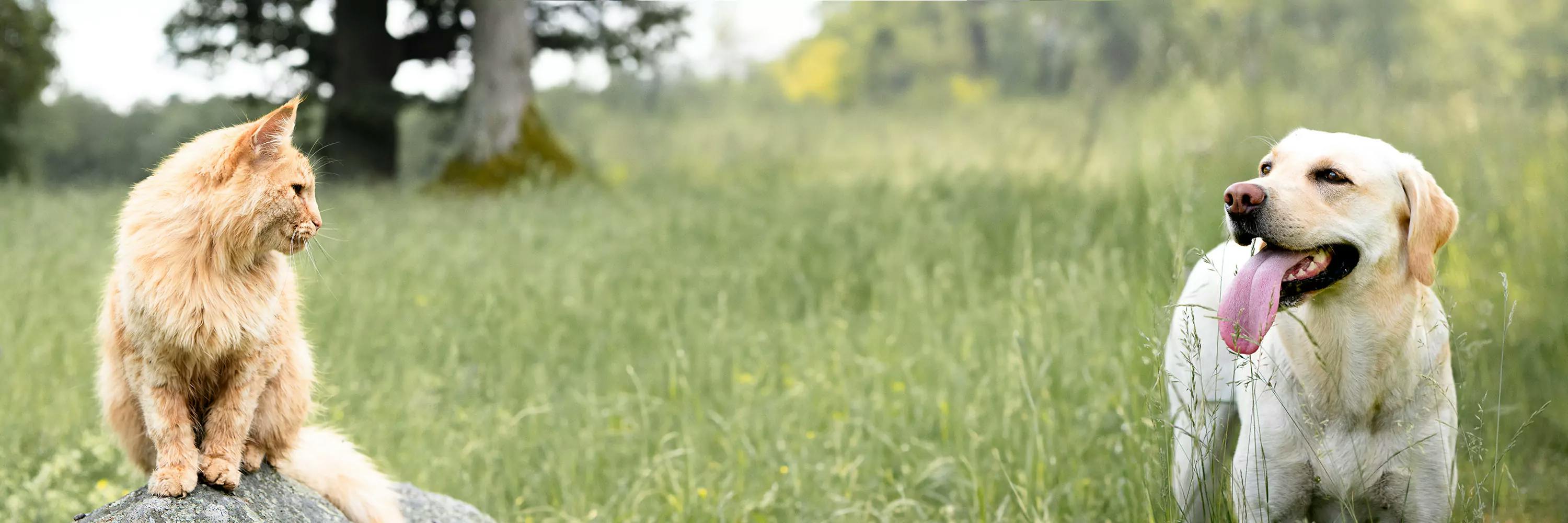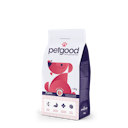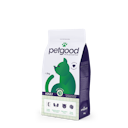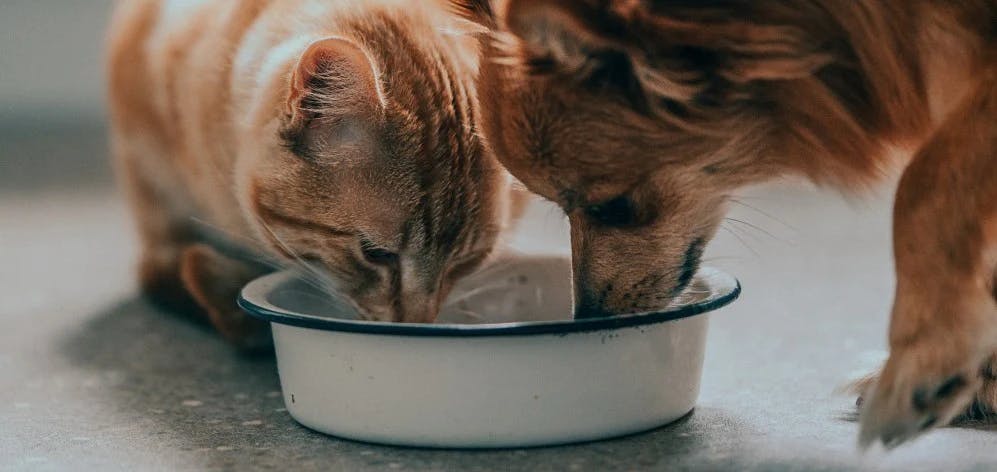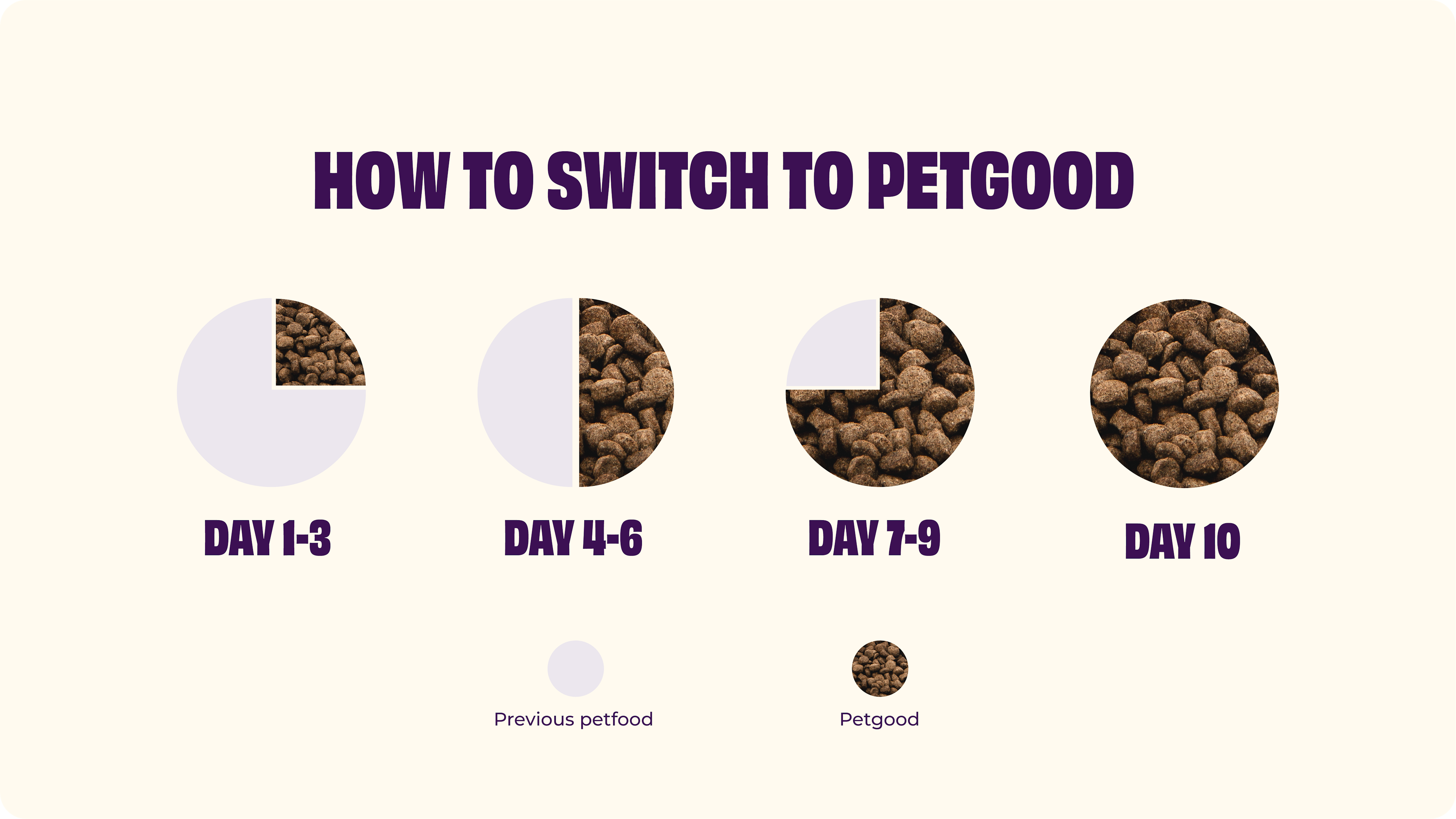Active location:
Select your country:

Petgood's Pet Food School - what is important to know when choosing food?
Have you just welcomed a new family member or are you wondering if your current pet food is right for your furry friend? Most dog and cat owners can relate to the complexity of the pet food jungle. In this guide, Karin, licensed veterinary nurse in Petgoods' veterinary team, will help you navigate through the options and provide advice on what to consider when choosing food for your dog or cat.
Petgoods' Pet Food School is divided into four different parts:
What are the nutritional needs of dogs and cats?
What should I consider when switching pet food
How do I know if the food is good?
What should I think about when changing pet food?
What are the nutritional needs of dogs and cats?
Basic Nutritional Needs
Mealtime is not only the highlight of the day but also the source of all essential nutrients that animals need to stay healthy, strong, and well. Food should provide protein for energy and muscle building, essential fatty acids for healthy skin and a shiny coat, vitamins for crucial immune system functions, minerals for blood oxygen transport, and calcium for the skeleton. It should also offer a balanced energy content that meets the animal's needs without leading to overweight.
The nutritional needs differ significantly between dogs and cats. Cats, being obligate carnivores, have a higher requirement for animal protein, among other things, compared to dogs. Therefore, it's crucial to always feed dogs with dog food and cats with cat food, avoiding mixing between species.
Nutritional Needs at Different Life Stages
The goal of good pet food is to meet the nutritional needs so that the cat or dog remains healthy, has a well-functioning digestive system, maintains an appropriate weight, and has the energy for all the adventures you want to embark on together.
Various factors affect the nutritional needs, with three of the most important being:
Activity level
Neutering status
Age
For example, an active outdoor cat has higher energy needs than an indoor cat, and a working sled dog has higher protein and fat requirements than a chihuahua living in an apartment. Neutered animals have a lower metabolism than unneutered ones, which also needs to be considered in feeding.
Age is a crucial factor. Puppies and kittens need food specially designed for their growth, making it essential to provide them with puppy or kitten food. Growing animals have different mineral requirements than adults. Therefore, puppy and kitten food is adjusted, including its calcium content, to prevent excess or deficiency. Growing animals also need more fat and protein than adults. Large-breed puppies, in particular, benefit from puppy food to reduce the risk of joint problems if fed incorrectly.
Some individuals may have specific needs or health issues that require specially tailored food. If your pet has underlying diseases or injuries, always consult your veterinarian for recommendations regarding food.
What should I consider when choosing pet food?
It's a good idea to think about the criteria you have for your pet's food. Is it time to switch from puppy/kitten food to adult food? Do you need a low-calorie option? Or does your pet have no special needs other than the basic ones, but you want to make a more sustainable choice? Writing down your preferences and criteria can help you find the options that best suit you and your pet.
Choose a High-Quality Complete Food
Regardless of your preferences, there's one criterion you shouldn't compromise on – providing a complete and balanced food. But what does that mean?
Complete - contains a sufficient amount of all necessary nutrients for the life stage.
Balanced - nutrients are balanced in appropriate proportions.
Complete food contains all the nutrients your pet needs in the right amounts. Complete food is available for both dogs and cats, and for different life stages such as puppy or adult. Choosing complete food means you don't need to supplement your pet's diet with any other foods or supplements unless your veterinarian recommends it due to specific health problems.
By choosing a high-quality complete food, you can be sure that your pet receives a balanced and nutritious diet, without the risk of deficiencies or excesses in any nutrients. If the food is a complete feed, it will always be indicated on the packaging.
How do I know if I have chosen the right food?
Today, there is a wide variety of pet food options available, with different variations and ingredients. There are also advocates for different types of food. There is no definitive answer to which type is best – our pets are individuals, and what works best for one dog or cat may not work as well for another. Therefore, it's also important to trust your own pet (and yourself!) and your ability to assess how your pet is doing.
Signs that the food is working well for your dog or cat
The first sign, of course, is whether your pet enjoys the food – if your dog or cat doesn't want to eat the food, everything else becomes secondary. Other good indicators to look for are your pet's digestive health and coat condition. Your pet should have firm, formed, and regular bowel movements. The coat should be shiny and healthy. Your pet should also maintain a proper body condition and muscle tone, and have energy.
If your pet seems to be doing well, enjoys its food, and you provide a complete feed – then it is getting everything it needs!
What are the risks of choosing the "wrong" food?
Many pet owners are concerned that their pets will develop nutrient deficiencies or diseases from the wrong food. There are also many claims and myths about different ingredients that are said to be good or bad for dogs and cats.
It's important to note that ingredient choices are secondary to nutrient choices. Recommendations for dogs' and cats' nutritional needs are not based on ingredients or foods but on nutrients – that is, the food as a whole provides the right levels of protein, fat, vitamins, and minerals. Different ingredients and raw materials can be used to achieve the final nutritional composition of the food.
Direct nutrient deficiencies due to incorrect feeding are rare today in dogs and cats, thanks to most pet owners providing complete food. Nutrient deficiencies or excesses can occur with homemade diets if the pet owner does not ensure that the food provided contains all the necessary nutrients. If you choose to exclusively feed homemade food to your pet, you must be well-informed about nutrient needs and the nutritional composition of the food you provide.
What should I consider when changing pet food?
Once you've decided to try a different food for your pet, it's essential to make a gradual transition. This gives the digestive system time to adapt, and you can observe how the new food works for your pet. Some pets can handle sudden changes without any issues, while others may experience digestive upset. If you're switching between very different types of food, such as from raw food to dry kibble, there may be more significant adjustments than when switching between similar types of food.
The transition should take place over approximately one to ten days, gradually increasing the amount of the new food while decreasing the old food until you're fully on the new diet.
Keep in mind that the feeding guidelines may not be the same for the new food. The energy content, weight, or size of the food may vary. Check the feeding chart on the new food's packaging and preferably weigh the food for the first few feedings to get an idea of the appropriate amount.


